 Written by guest blogger, Susan McClure, Municipal Archivist
Written by guest blogger, Susan McClure, Municipal Archivist
Looking to trace your roots? Halifax Municipal Archives, opens a new window can help!
Municipal records are a relatively untapped source for family history research. If genealogists want to really get in touch with their ancestors, they may find these municipal sources useful. Note: Some records may be restricted until 20 years after the death of the individual.
Police and prison records
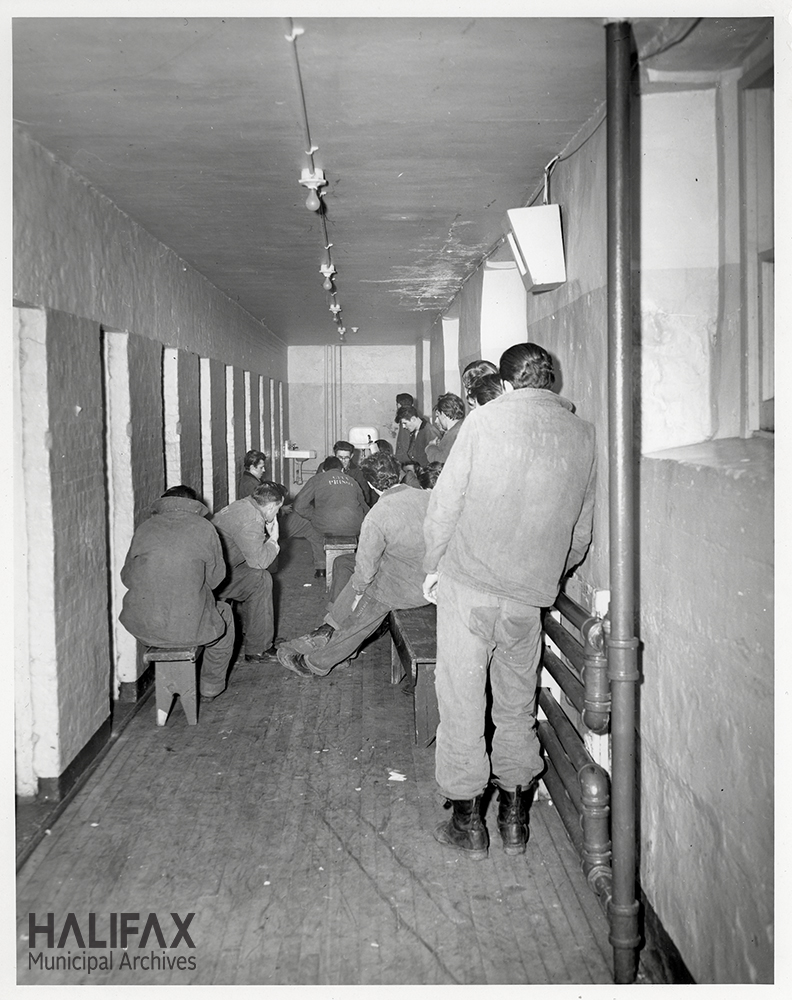
If you’re serious about investigating your family history, brace yourself to discover unsavoury details. Perhaps you will find an ancestor who had trouble with the law.
- Dartmouth Police Court Records 1872–1919 (101-16, opens a new window)
- Halifax Police Department records 1851, 1856, 1871–1998 (102-16), opens a new window
- City (Rockhead) Prison records, 1854-1932, 1945-1957 (102-18B)
- County Jail records, 1876-1967 (312-67)
Taxation records
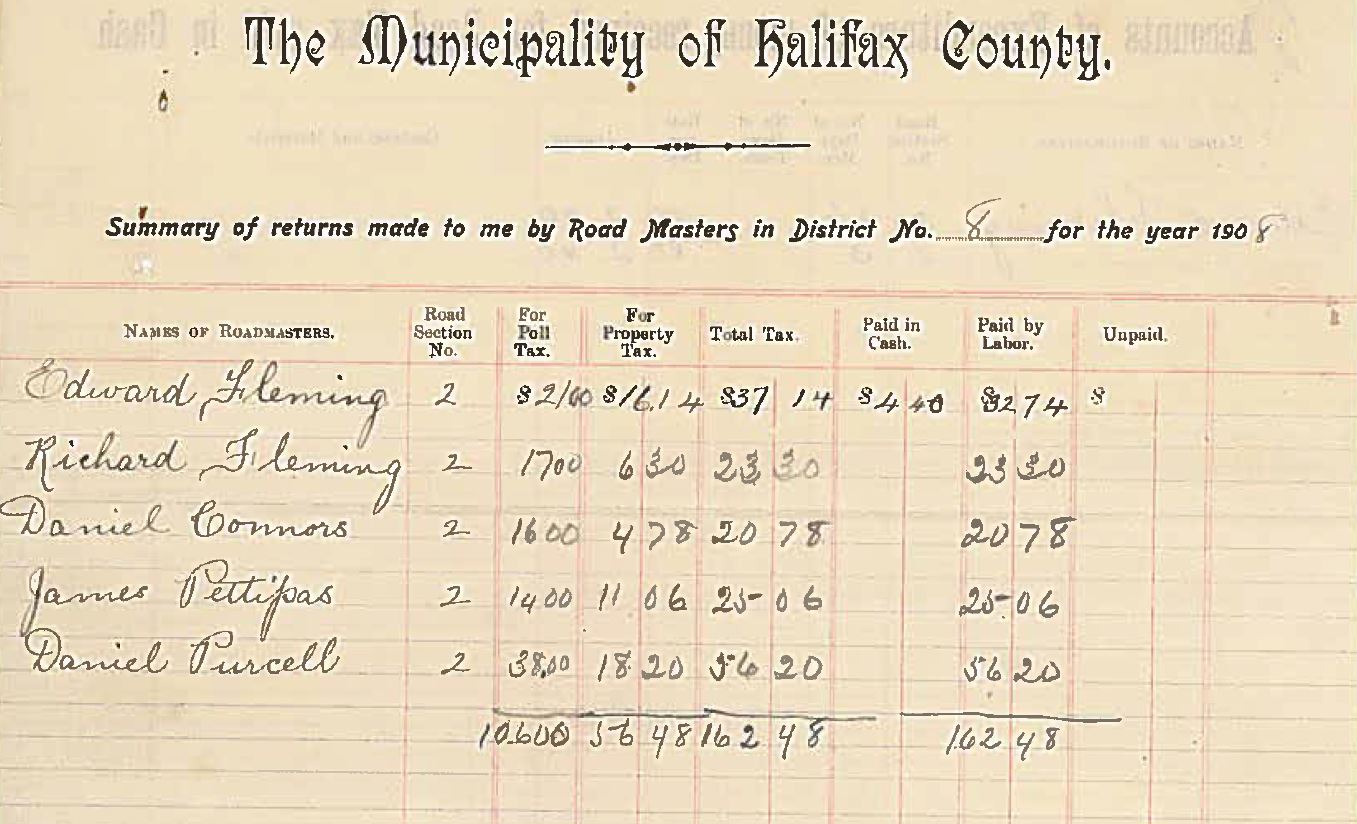
Nothing is more certain than the fact that governments keep records on the taxes we all pay, and these ledgers can provide basic information on residents.
- Halifax property assessment rolls, 1817-1975 (102-19A, opens a new window)
- County property assessment rolls, 1835-1978 (312-86A, opens a new window)
- Dartmouth property assessment rolls, 1873-1978 (101-19, opens a new window)
The Town of Dartmouth gave a tax exemption to firefighters and the widows of deceased firemen. If you’re looking for a firefighting ancestor, the Dartmouth Engine Co., the Union Protection Company of Dartmouth, and the Dartmouth Axe and Ladder Co. supplied:
- Lists of firemen from tax rate books, 1885, 1888, 1891–1903, 1909 (101-19C , opens a new window)
In the early days, residents would work on roads rather than pay taxes for road maintenance. The municipality tracked their names in “statute labour” books:
- Dartmouth Statute Labour Books 1843–1844 (101-2J, opens a new window)
- County Statute Labour Returns and Road Returns, 1880–1908 (312-72, opens a new window).
Cemetery records
The municipality recorded details of resident’s deaths, through the operation of municipally-run cemeteries:
- Committee of Camp Hill Cemetery records 1840-1994 (102-60, opens a new window) : Cemetery lot registers, account books with individuals’ names attributed to them, and burial record cards are useful to genealogists. Of special interest is a list of mariners who died in Camp Hill Hospital, the Halifax Infirmary, the Nova Scotia Hospital, the Nova Scotia Sanatorium (tuberculosis), and were buried at Camp Hill Cemetery (102-60-15). The list of deaths includes the mariner's ship, home port (e.g. China, India, Sweden, England), and cause of death. Similarly there are lists identifying the graves of soldiers and sailors killed in World War One and World War Two. The burial record cards in particular provide valuable information about interments and are arranged alphabetically within specific cemetery divisions.
- Fairview Cemetery records 1884-1994 (102-32), opens a new window: Located in northwest Halifax, Fairview Lawn Cemetery contains the graves of many victims of the Halifax Explosion, the RMS Titanic, and the City of Halifax’s poor. Records include burial accounts, burial register index, burial permits, deeds issued, as well as administrative records.
Additional burial information can be obtained through Halifax’s Cemetery Operations at (902) 490-4883 or cemetery@halifax.ca.
Social Assistance records
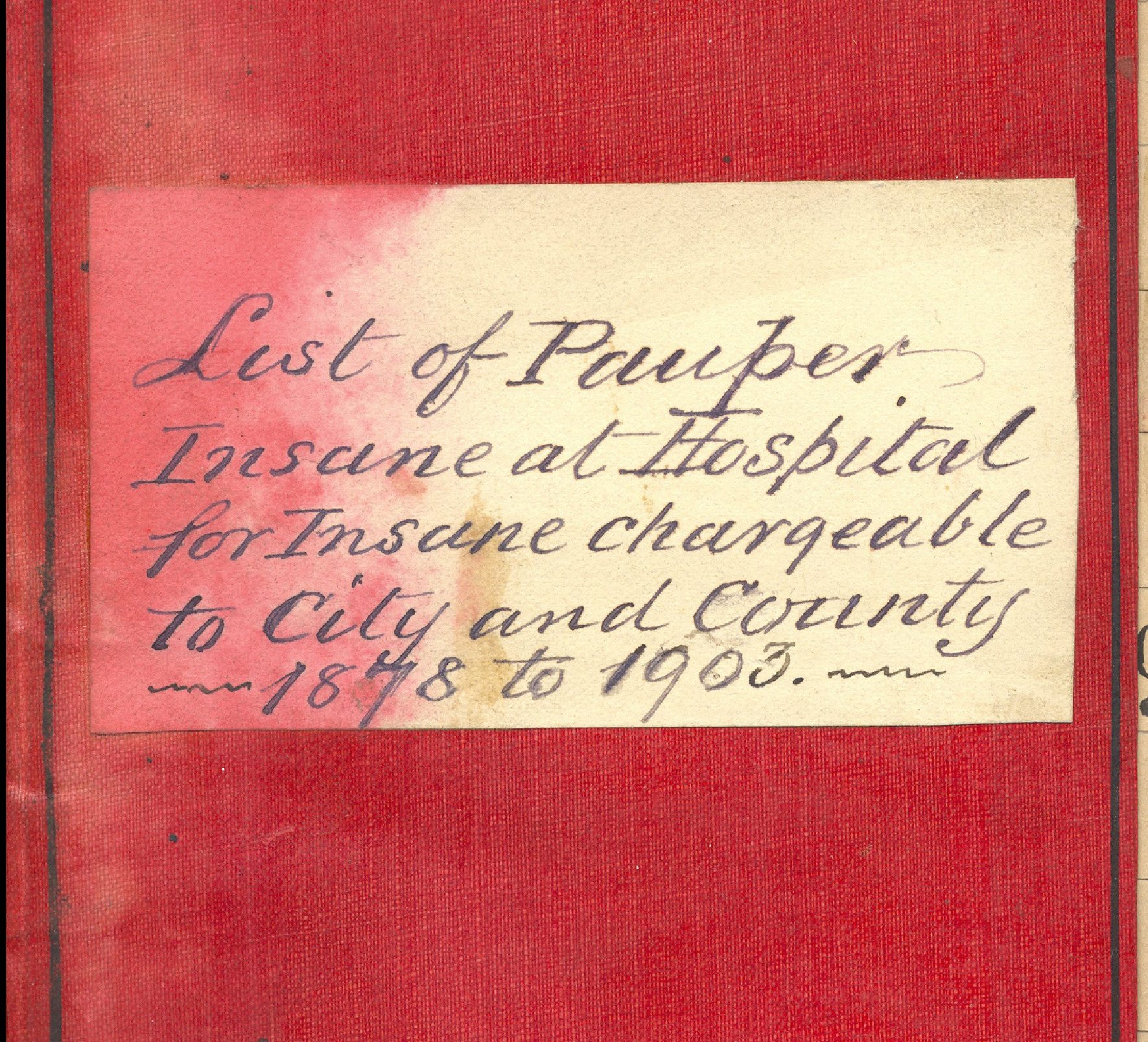
Until the 1990s, municipalities were responsible for social welfare and created records with a wealth of personal information that may be restricted until 20 years after their death to protect privacy, but eventually is available for family history research:
- City Home registers 1802–1965 (102-33A, opens a new window): Halifax’s Poor Asylum, later renamed the City Home, was a workhouse to care for the city’s unemployed, elderly, orphaned children, mental patients, and medical patients. Registers record resident's name, age, date admitted and discharged, reason for admittance, by whom admitted, and religious affiliation, although completeness of information varied over time. Observations about the inmate are occasionally recorded. Registers are arranged in chronological order by admittance date. There is also a Register of Deaths at City Home, 1914-1947, which records name, date, age, and cause of death. A searchable index to the List of Paupers in the Halifax Poor House, 1802-1811, opens a new window gives the name, age, originating community and cause of admission, as well as other indicators such as ethnicity.
- Board of Health infectious disease cases 1895–1941(102-28D, opens a new window): Entries include patient information such as their name, street address, disease, results, fumigation, school, and general remarks.
- Halifax Tuberculosis Hospital records 1926–1959 (102-31, opens a new window): Admittance records from 1926-1940 are in alphabetical order and list patient name, date of admittance, age, religion, birth place, friends’ addresses, date of death, and length of stay. Later admittance records are arranged chronologically by admittance date and only include patient name, date of admittance, date of release, and length of stay.
- Dartmouth Housing Commission financial accounts, 1922-1947 (101-70): Ledgers list the names of residents taking loans for home construction.
- Halifax County Overseers of the Poor records, 1835, 1882-1950 (312-63), opens a new window: Affidavits from the overseer provide detailed personal histories used to determine the settlement of individuals or families. Admission papers to the Poor's Farm and reports of the Overseers of the Poor provide personal information about the poor in each County district.
- Halifax County Poor Farm returns, 1903-1929 (312-64-4, opens a new window) : Record the names of inmates, their districts, and their dates of admittance or discharge.
- Nova Scotia Hospital account correspondence 1919–1955 (312-61-2), opens a new window: Contain affidavits used to determine settlement, which provide detailed histories of patients.
- Halifax County Welfare account ledgers 1876–1957(312-75-2): Contain the names of individuals receiving municipal welfare support, including those in the county and city homes, the Nova Scotia Hospital, the Nova Scotia Sanitarium, and under the Child Protection Act.
- Halifax County’s Committee on Insane kept a list, 1859-1909 (312-65-1) of "insane paupers" in the county, including those committed to the Nova Scotia Hospital for the Insane.
Municipal employee records
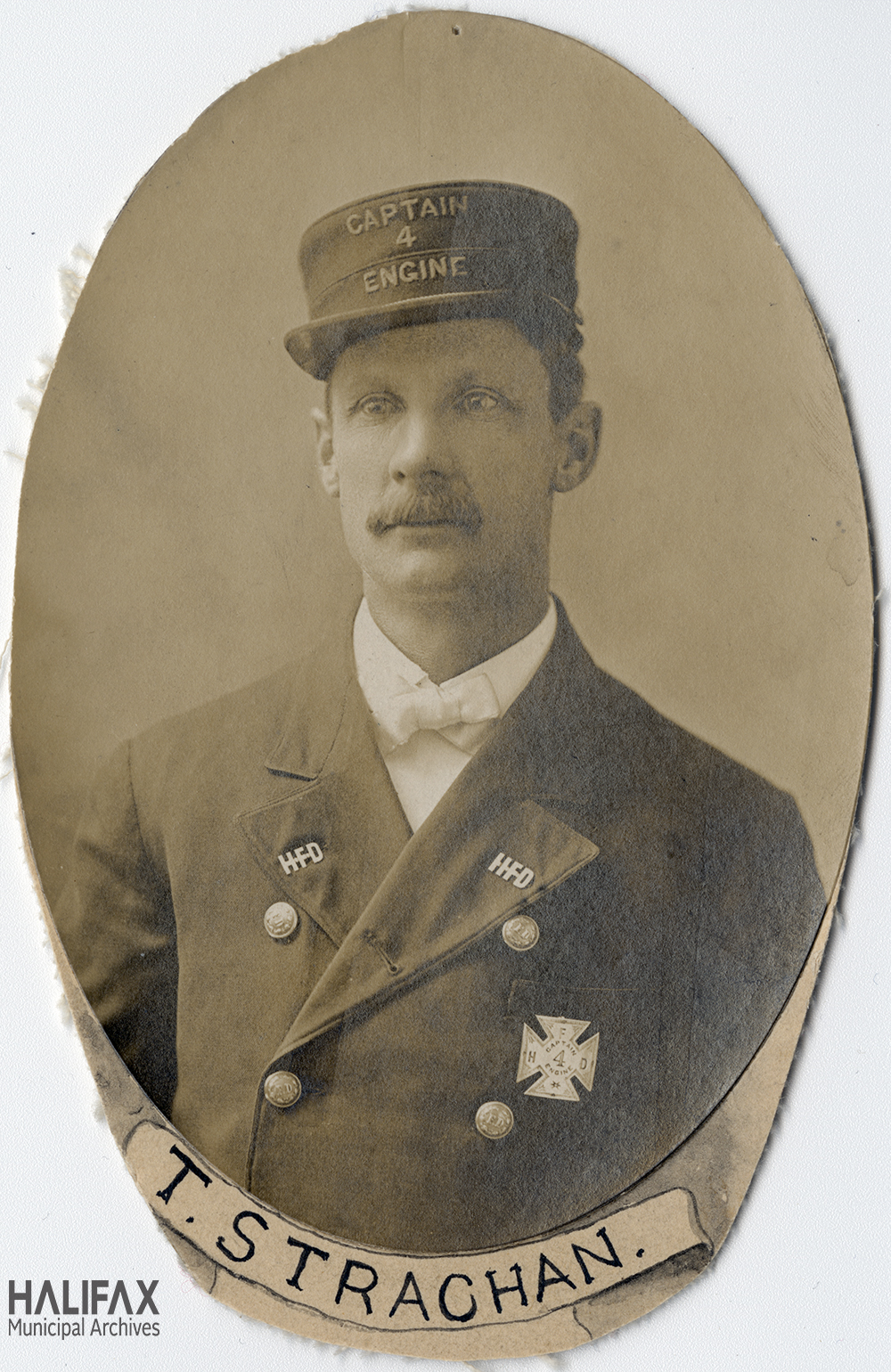
Your ancestor may have worked for the city/town/county; the Municipal Archives have these employment records:
- Dartmouth Ferry Commission Personnel records 1904-1949 (101-81K-28), opens a new window
- Dartmouth Ferry Labour Books 1862-1885 (CR-21G):, opens a new window Record the name, occupation, hours worked, and amount of payment for employees.
- Halifax Police Staff Register, 1892-1914 (series 102-16R.3, opens a new window): An alphabetical listing of police officers noting name, date they joined the force, and notes on their career.
- Halifax Police personnel registers, 1894-2003 (102-16S), opens a new window: Record the name, birthdate, place of birth, and religion of officers and non-commissioned police staff such as janitors and secretaries. These ledgers also record the dates the person joined the force, were promoted, reprimanded, resigned, and died, with details about the event. Some entries have a newspaper obituary attached.
- Halifax Fire Department Roll of members, 1903–1911 (102-111-2, opens a new window): Includes employee names, salaries, the fire station and house that a firefighter belonged to, as well as the dates of hiring and retirement or resignation.
- Employee Superannuation ledgers, 1906-1954 (102-21B): Tracks city employee pension contribution. The ledgers include: employee name, date of birth, date entered into service with the city, address, date of death or retirement, salary, position, and amount contributed to the superannuation fund. Note: Only permanent employees contributed to the superannuation fund.
School records
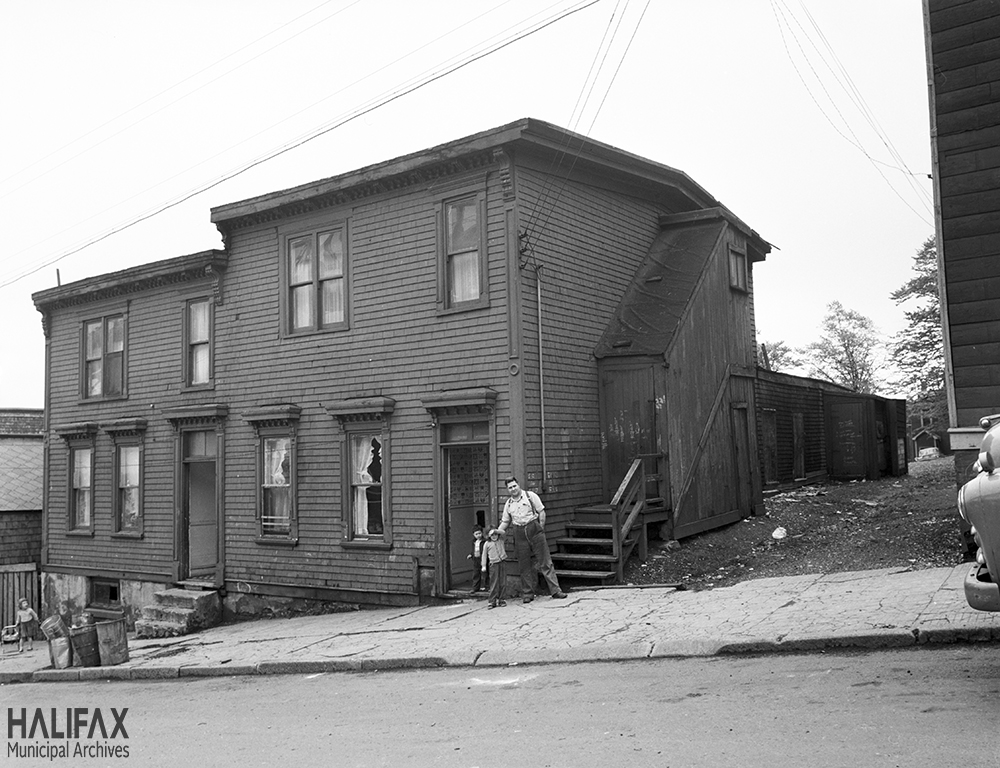
Most of us go to school, so these records are a great source for linking students to places and parents. Beyond municipal school board minutes, Halifax Municipal Archives has these unique sources:
- Dartmouth School Savings Bank Ledgers 1887-1921 (101-62): Teachers recorded the names of students and their weekly payments for their schooling.
- Teachers' Contracts with the Dartmouth Board of School Commissioners, 1889-1897 (101-62): name the teacher and their rate of pay.
- Dartmouth Truancy Officer's Census registers 1904-1905 (101-62) gives the name, age, name of parent or guardian, street of residence, school last attended for all truant children aged 6-16.
- Dartmouth Assessment records for school tax, 1892; 1893; 1907; 1908 (101-19D): contains records related to collection of school tax for "O.D." or “out-of-district families.” Out-of-district school tax was paid by families who lived in areas of Halifax County that bordered Dartmouth, such as Preston and Woodside. Books include the person’s name, school district, real property amount, personal property amount, total tax assessed, poll tax, and date of payment.
- County School Board Correspondence, 1883-1891, 1942-1956 (312-74-2): Some school section correspondence includes teacher contracts (ca. 1950s) and assessment rolls (ca. 1949-1951). Contracts include the names of teachers and where they taught, while assessment rolls list the school taxes owed by individual ratepayers.
Election records

The Archives does not keep a lot of election records, but these voters lists are good sources:
- Dartmouth Electoral Lists 1886, 1891, 1893-1894, 1928, 1966 (101-78A): Contain names of people eligible to vote in town elections.
- Dartmouth Poll Books 1874–1881, 1901–1931, 1951–1978 (101-78B): Contain lists of people who voted in Dartmouth elections.
- Halifax County Election records 1914, 1943, 1949, 1952, 1955 (312-61-5): Contain lists of the qualified voters in each polling district.
Even if your ancestor didn’t find their way into municipal records as a police officer, pauper or petty thief, the Municipal Archives maps, architectural plans and photos can give your family a sense of what their streets and roads looked like when your ancestors walked them. Check out our Flickr Albums and Featured Maps and Plans.
All of these records and many more listed on our Genealogical Sources web-page are available at the Municipal Archives. Contact archives@halifax.ca or 902-490-4643. You may have ancestors here waiting to be discovered.
Learn more about what the Halifax Municipal Archives can offer in this blog post.


Add a comment to: Halifax Municipal Archives: A Source for Family History Research